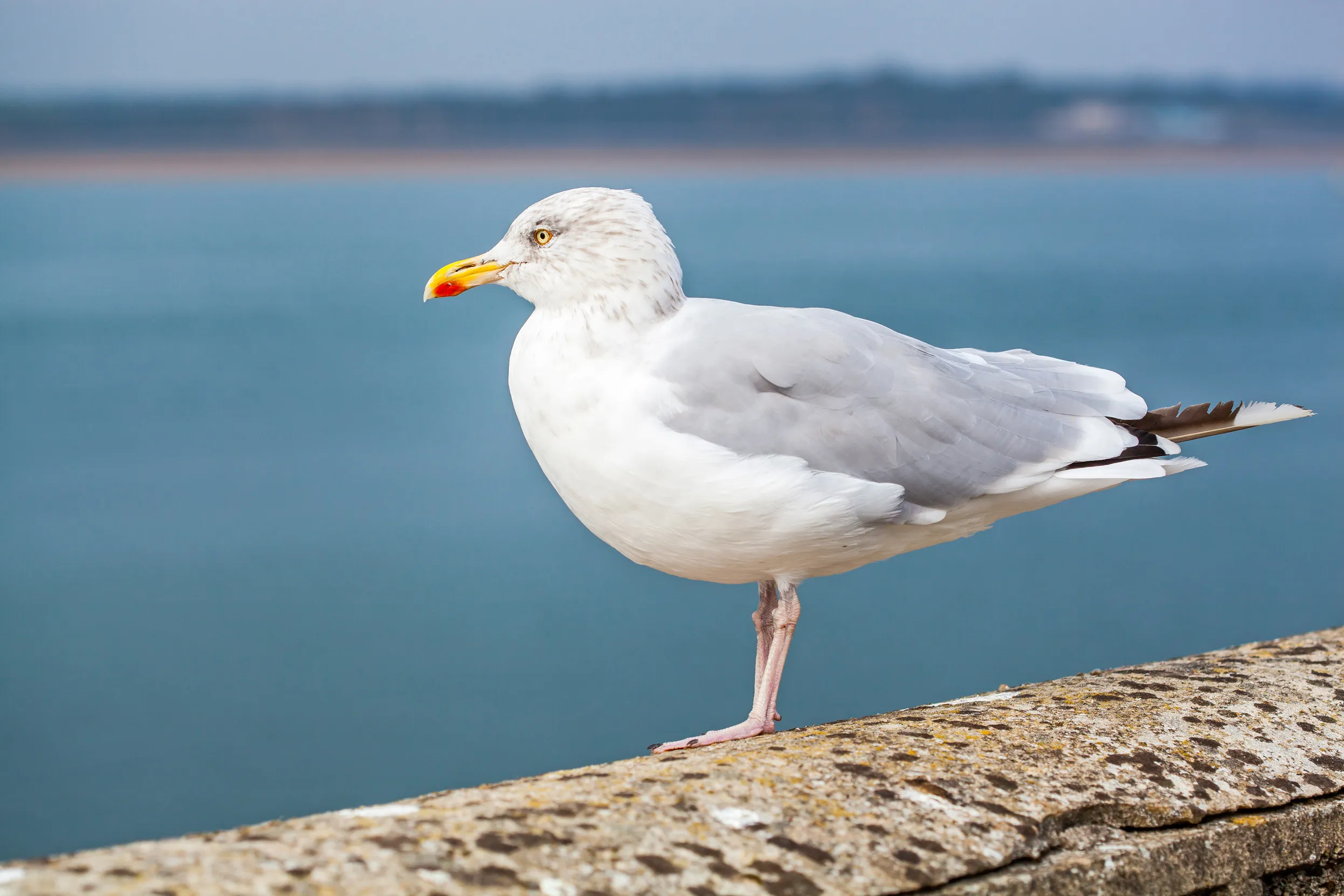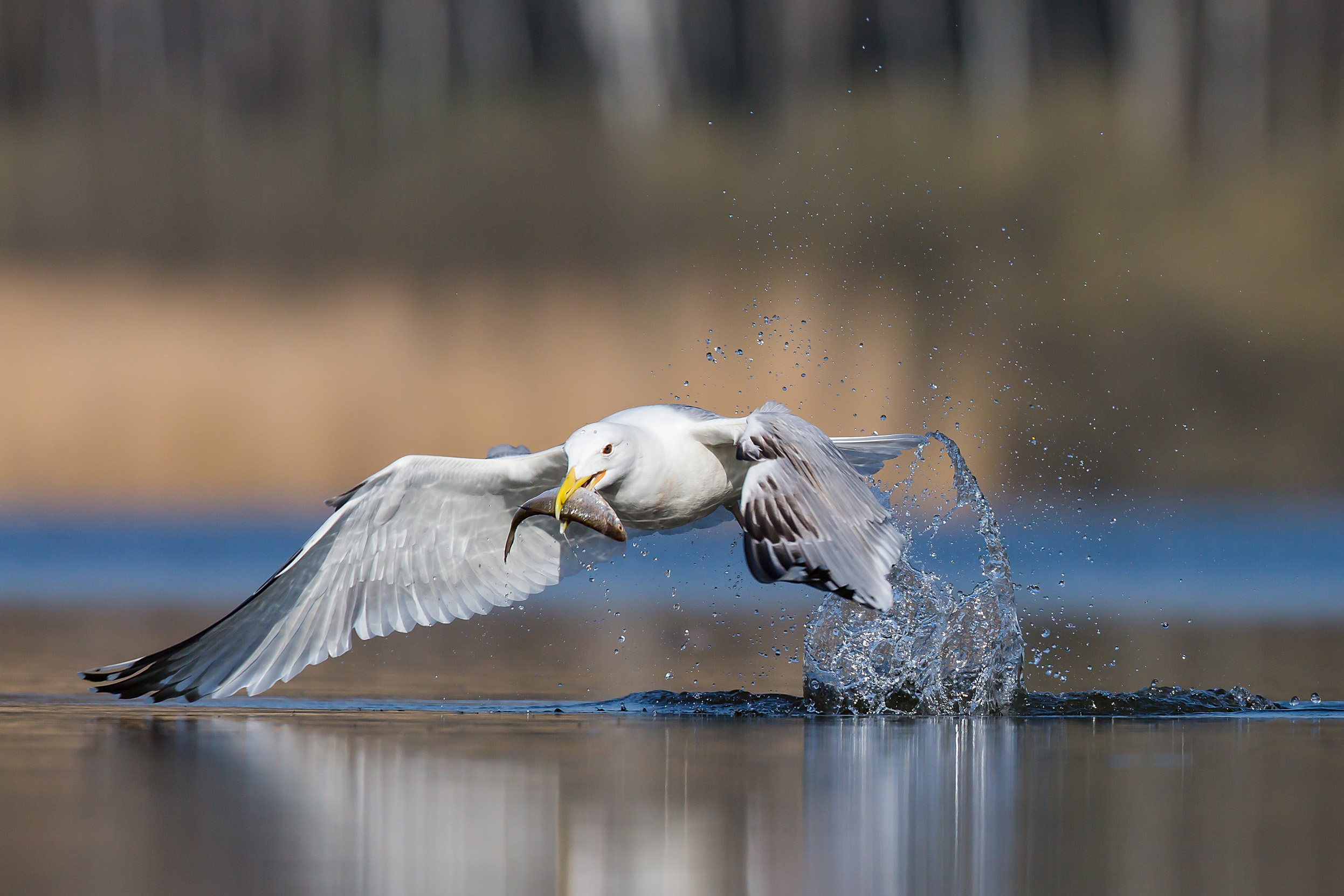How to identify
Herring Gulls are large, noisy gulls found throughout the year around our coasts and inland around rubbish tips, fields, large reservoirs and lakes, especially during winter.
Adults have light grey backs, white under parts, and black wing tips with white 'mirrors'. Their legs are pink with webbed feet and they have heavy, slightly curved bills marked with a red spot. Young birds are mottled brown.
This species is on the Red List due to ongoing population declines and wintering population declines. Gulls and the law: What to do if gulls nest on your roofDid you know that there is more than one type of ‘seagull’? In fact, there are around 50 species worldwide and six types which commonly breed in the UK! Perhaps you have that noticed that not all of them are seen by the sea?
Key
- Resident
- Passage
- Summer
- Winter
* This map is intended as a guide. It shows general distribution rather than detailed, localised populations. - Jan
- Feb
- Mar
- Apr
- May
- Jun
- Jul
- Aug
- Sep
- Oct
- Nov
- Dec


